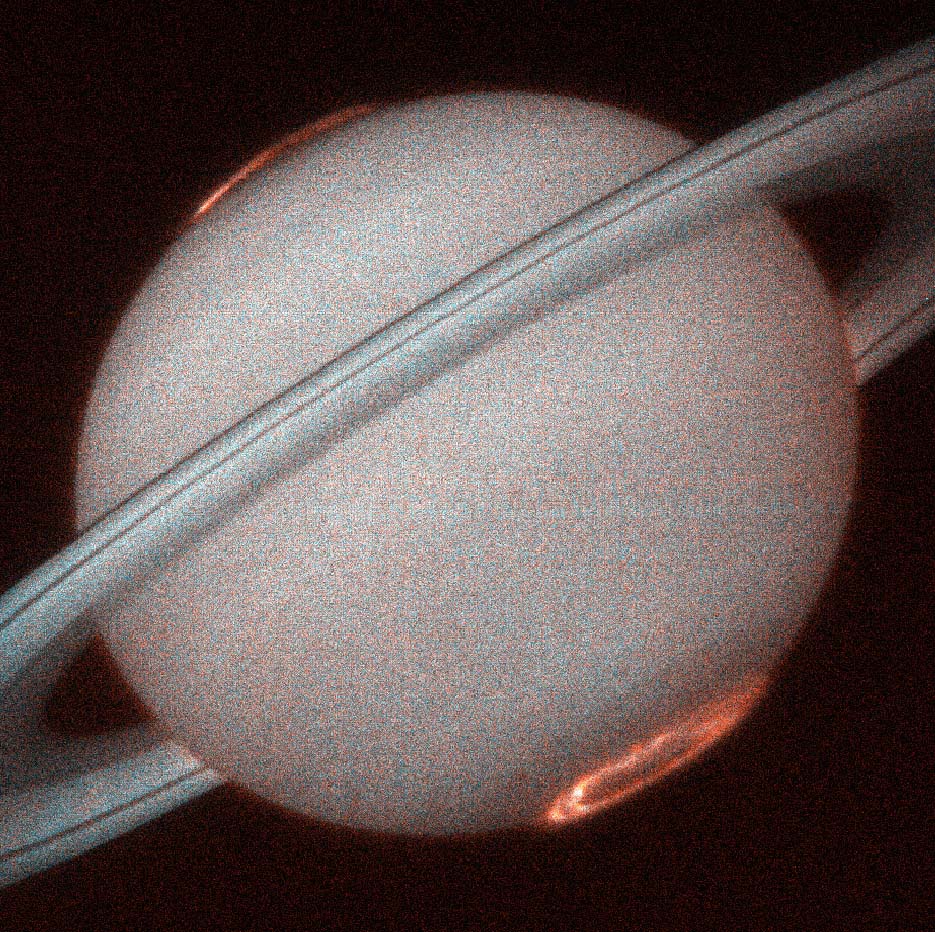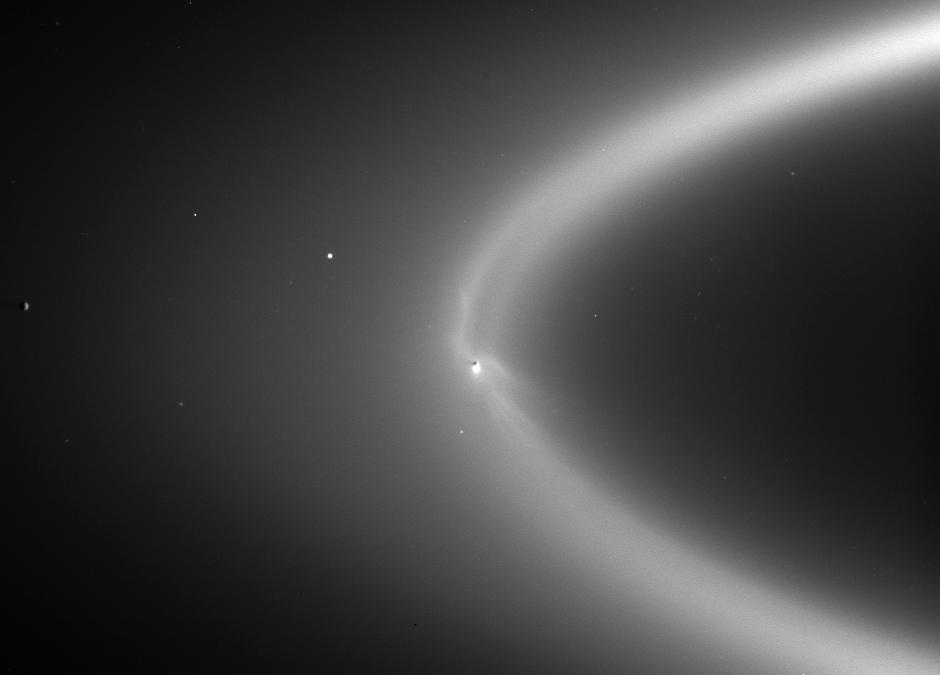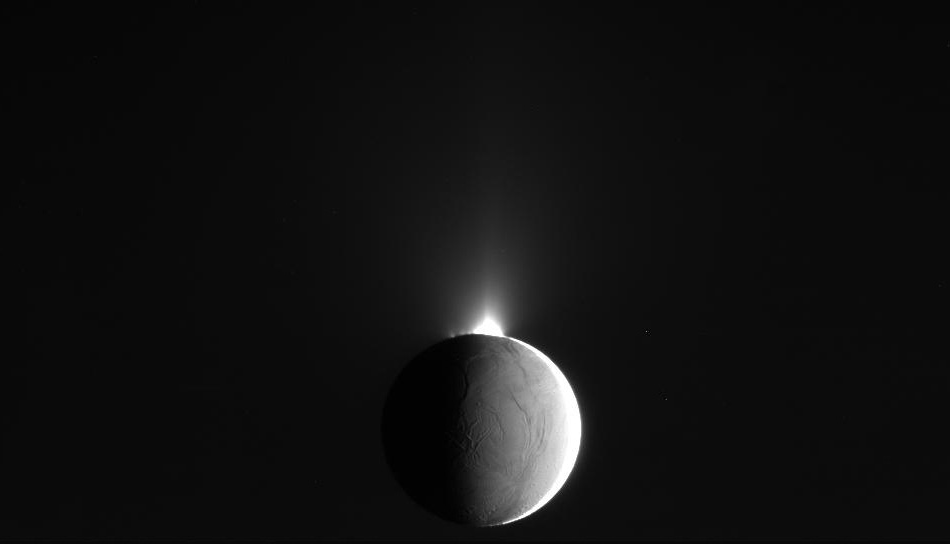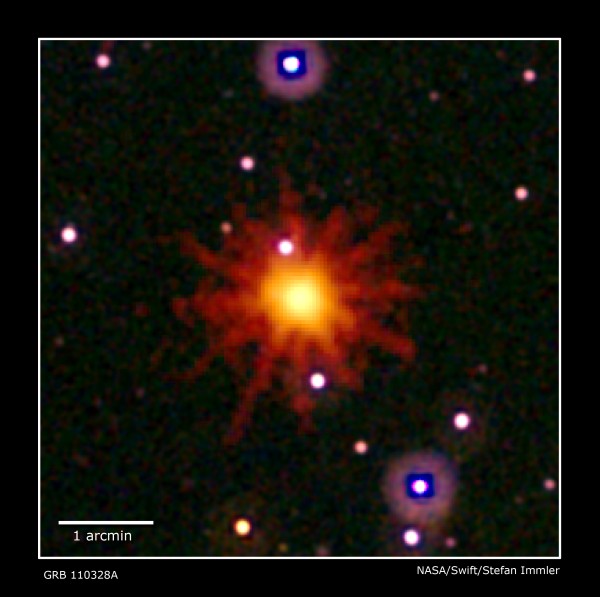Added 1 new A* page:"A* is a black and white, panel by panel look into the future. I'll take a room at the Metropole Station."
-- Dugan's Air Force |
An April BBC article (yes I'm kind of behind in my news queue...need to close some of these tabs I've been keeping open! :P) says that auroral activity on Saturn has been linked to the planet's small moon Enceladus, and specifically to the salty ice particles Enceladus' geysers shoot out into space--ions in this material end up forming an electrical circuit with Saturn, connecting at Saturn's poles, where they cause the visual effect of an aurora.
I posted about aurorae on Jupiter and Saturn on the A* forum before (Jupiter's aurorae have been attributed to three of its moons), including this nice old Hubble ultraviolet photo of Saturn's polar lights:

image by NASA (source)
I've also posted on the A* forum about Enceladus before, so handily enough I already have a few photos illustrating its icy activity; for instance, here's the 500 km moon going through the ice crystals it has left in the path of its own orbit

image by NASA (source)
and then we have a nice dramatic wide shot of some of its ice geyser activity:

image by NASA (source)
~~~~~~~
And staying in the theme of following up on stuff I've written a bit about before, you may recall that back at the end of May I wrote about an unusually large, unusually powerful gamma ray burst picked up by the Swift satellite:

image by NASA (source)
The thinking at the time was that all that energy probably resulted from a star being pulled into a large black hole, and according to this recent article, that has now been confirmed, and the source galaxy identified as "a small galaxy in the Draco constellation, some 3.8 billion light-years away." So that galaxy's central supermassive black hole sucked in a star; gravitational, electromagnetic, and who knows what other forces tore it apart as it fell into the hole; and the hole's magnetic field channeled much of the resulting energy into beams shooting out from the poles of the supermassive black hole--and we just happened to be in the way of one of them, 3.8 billion years later.
~~~~~~~
And then there was the announcement last week that Iran had launched its second satellite, "Rasad," meaning "observation," into orbit, supposedly to take photos for high-resolution maps of Earth. Their first satellite launch, "Omid," took place in 2009; and last year, they claimed to have "launched a rocket carrying a mouse, turtle, and worms into space."
Good on them, I suppose (less good for the mouse, turtle, and worms; of course you'd think if they do have a good camera up in space they'll have lots of things they'll be using it to peer into in oh say the United States, but hey we do the same to them--and to animals with one-way tickets to space), although when the announcement comes via their state TV, beginning with a phrase like "our glorious scientists," and with no external source being able to confirm such launches, you kind of wonder a bit. But here's hoping they are coming closer to space exploration, and to the international scientific cooperation that almost inevitably goes along with it.
|
